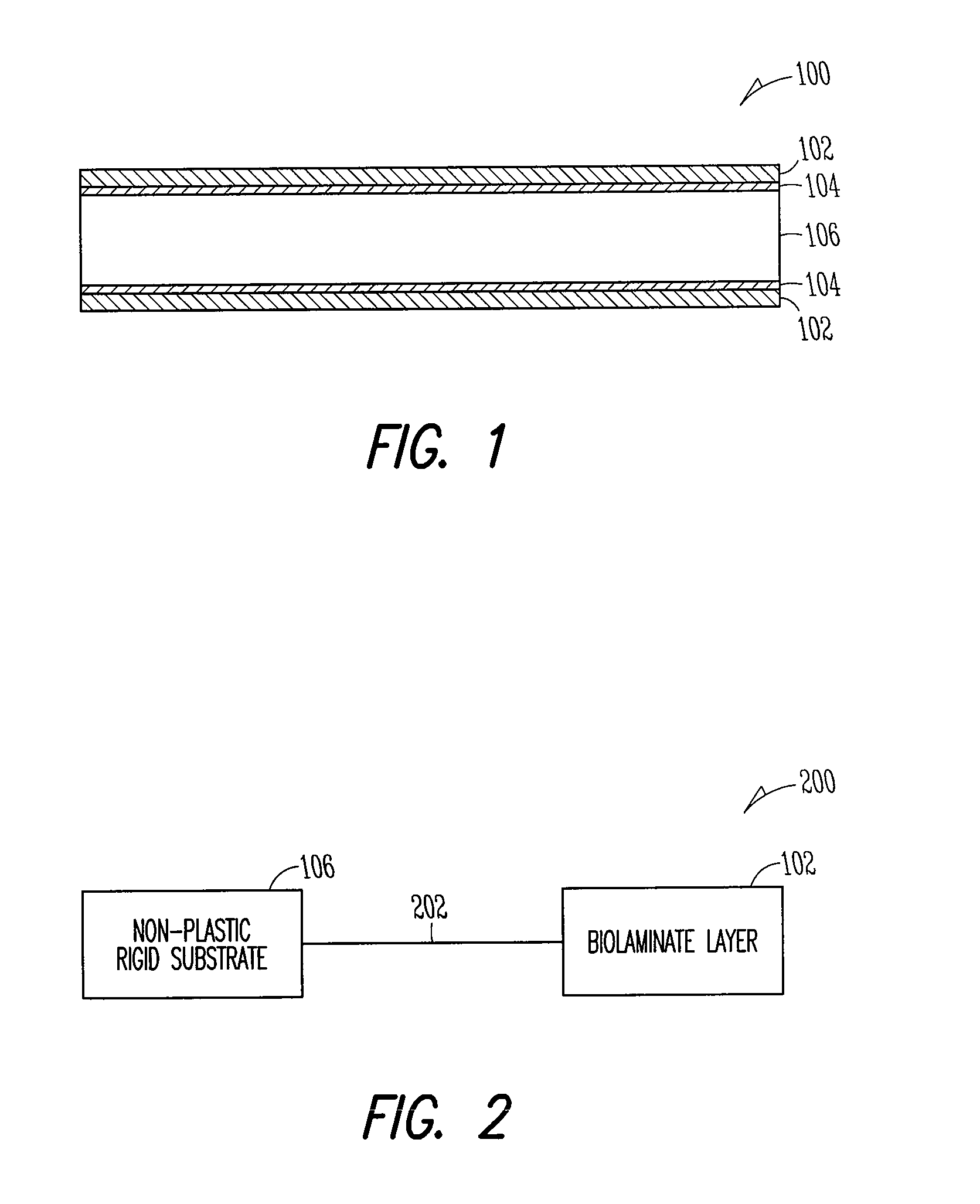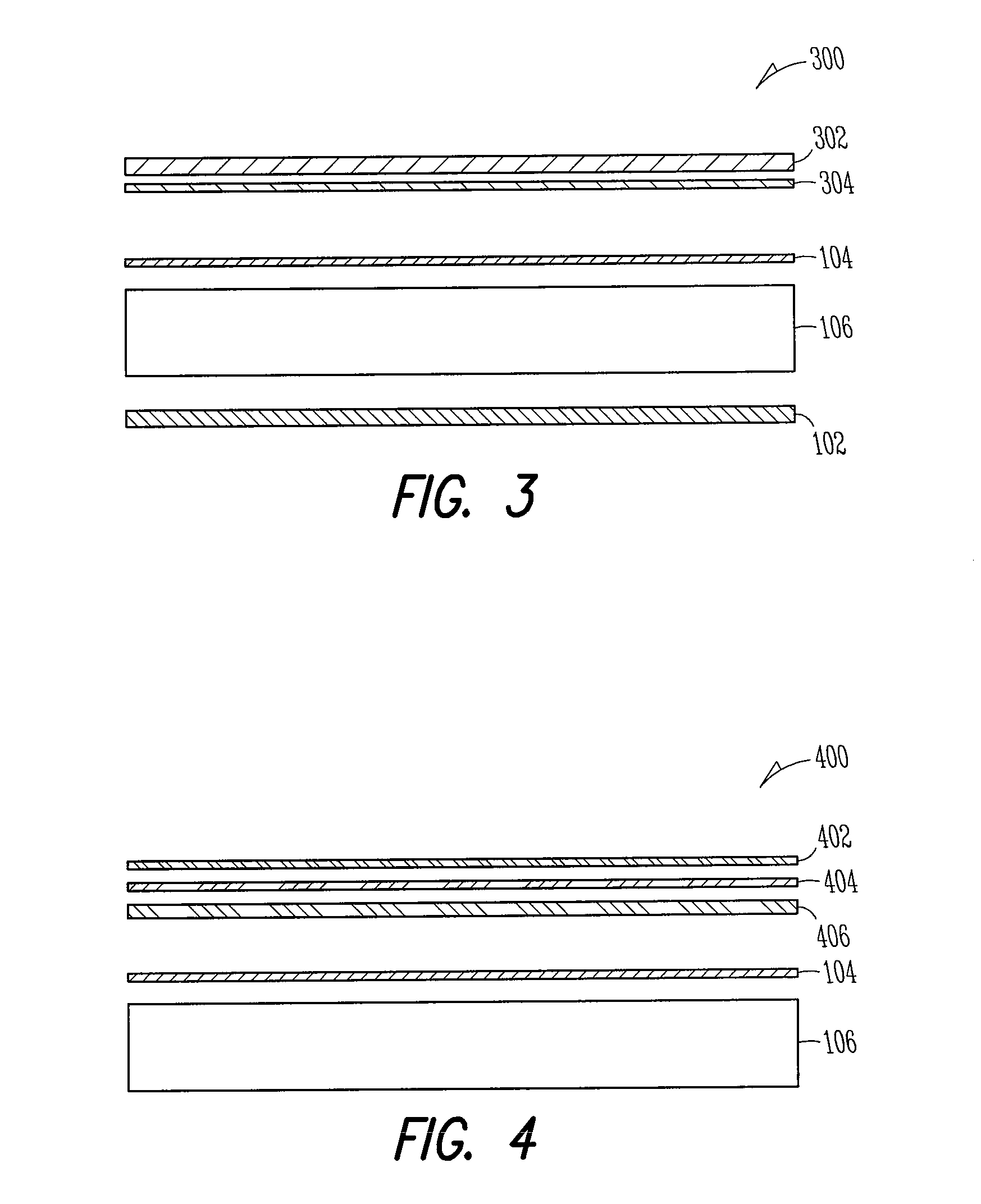Biolaminate composite assembly and related methods
- Summary
- Abstract
- Description
- Claims
- Application Information
AI Technical Summary
Problems solved by technology
Method used
Image
Examples
example 1
[0102]PLA pellets were placed into an extruder with temperatures settings 20° F. above the melting point at 420° F. which is also recommended by Natureworks for processing temperature. The material poured out of the die like honey sticking to the die. The temperature was dropped to 310° F., over 80° F. lower than its melting point. The RPM was increased to add shear input to the material. The resultant shape held its complex shape with minimal distortion.
example 2
[0103]PLA pellets were placed into an extruder using a sheet die with processing temperatures of 380 to 420° F. and a clear sheet was produced. The sheet was brittle and easily cracked when bent. The resultant sheet was flat laminated onto a wood particleboard using a heat activated glue under heat and pressure using a hot press with temperature of 150° F. and pressures under 50 PSI. The material showed very good adhesion to the substrate.
[0104]The same sheet as above was laminated using a cold laminating method commonly used for HPL using a PVA and cold press laminating method. The PLA biolaminate sheet did not have any adhesion to the substrate and was easily pulled away.
[0105]PLA pellets were placed into a open twinscrew extruded and processing temperatures were lowered to 320° F. and material pulled out of the extruder through the vent before the die section.
[0106]PLA was placed into an extruder and processed at temperatures below 330° F. well below the melting point using a she...
example 3
[0118]A soybean wax was added to the PLA at 5% and extruded through a profile die. The temperature was dropped to 290° F. and the material was a smooth high integrity shaped with good melt strength sufficient to hold a profile shape. Shear was increased and the shape was improved and smoothness of surface was also improved. The hot shaped article was pulled onto a conveyor belt with no changes in shape from the die.
PUM
| Property | Measurement | Unit |
|---|---|---|
| thickness | aaaaa | aaaaa |
| boiling point | aaaaa | aaaaa |
| temperature | aaaaa | aaaaa |
Abstract
Description
Claims
Application Information
 Login to View More
Login to View More - R&D
- Intellectual Property
- Life Sciences
- Materials
- Tech Scout
- Unparalleled Data Quality
- Higher Quality Content
- 60% Fewer Hallucinations
Browse by: Latest US Patents, China's latest patents, Technical Efficacy Thesaurus, Application Domain, Technology Topic, Popular Technical Reports.
© 2025 PatSnap. All rights reserved.Legal|Privacy policy|Modern Slavery Act Transparency Statement|Sitemap|About US| Contact US: help@patsnap.com



